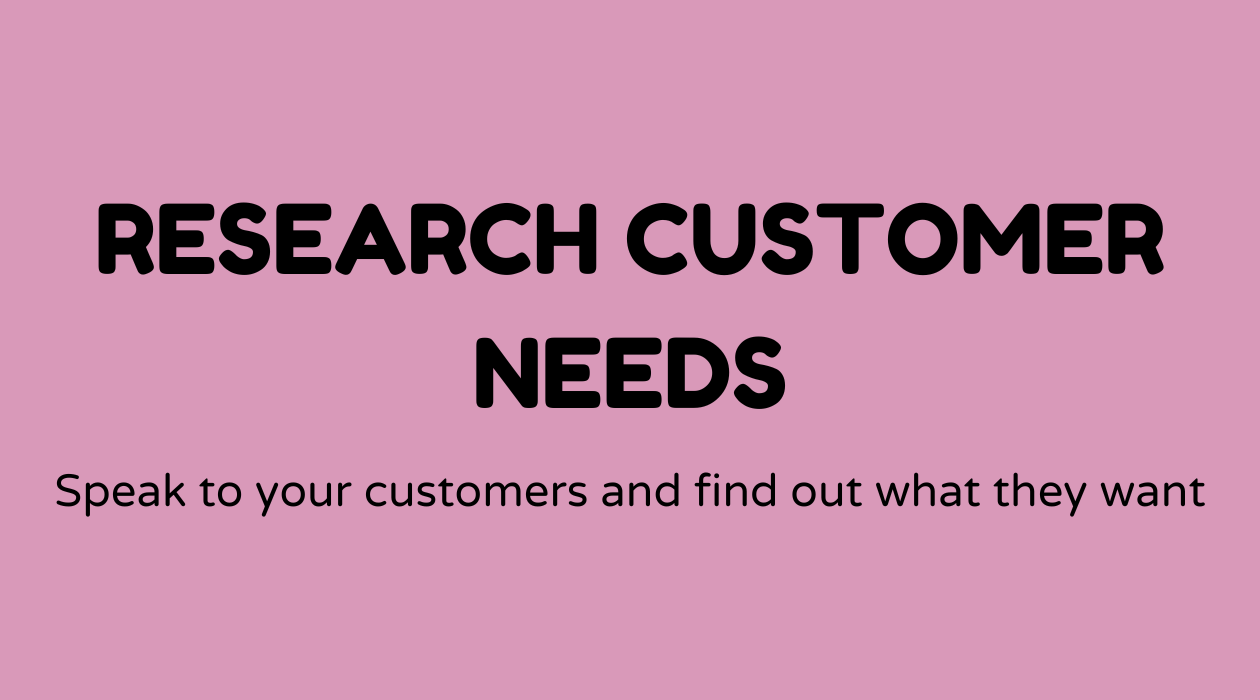Research customer needs

Overview of Researching Customer Needs
In the rapidly changing domain of product development, grasping customer preferences is crucial. The capacity to investigate and identify what your customers genuinely desire forms the foundation of a successful business strategy. Imagine being able to foresee their tastes with clarity! This is the benefit of conducting thorough customer research.
Organizations that proficiently investigate customer preferences distinguish themselves in the marketplace, consistently adapting to remain competitive. Integrating these insights can lead to the creation of products that resonate deeply with the intended audience.
Why Researching Customer Needs is Important
Understanding customer needs can greatly influence a business. Here are the compelling reasons this is important:
-
Product Development: Customizing your products to align with customer expectations can enhance satisfaction and loyalty.
-
Market Competitiveness: Organizations that comprehend what their clients desire are better equipped to excel in comparison with their rivals.
-
Business Growth: By fulfilling customer preferences, businesses often experience an increase in sales and market presence.
Researching customer needs is akin to having a map during a treasure quest. Without it, you may drift aimlessly, but with it, you're swiftly on the path to achieving your goals.
What is Researching Customer Needs?
In simple terms, researching customer needs involves collecting information to understand the desires, expectations, and challenges of your target market. This process frequently combines both qualitative and quantitative techniques.
Qualitative research typically encompasses interviews or focus groups that dive deeper into customer emotions and motivations. On the other hand, quantitative research relies on surveys and data analysis to provide measurable insights.
How Do You Research Customer Needs?
To effectively research customer needs, you should take a structured approach. Here's how:
-
Define Your Objectives - Clarify what you hope to achieve with your research. Is it enhancing a product, entering a new market, or improving customer service?
-
Gather Data - Utilize methods such as surveys, interviews, focus groups, and customer feedback. Employ both qualitative and quantitative techniques for a well-rounded understanding.
-
Analyze the Data - Look for trends and insights. What common complaints or wishes arise? Are there unmet needs?
-
Implement Changes - Use the information you've collected to make informed decisions. This could involve adjusting existing products, developing new features, or modifying your marketing strategy.
-
Evaluate Results - Once changes are applied, assess whether they effectively meet customer preferences. Adjust strategies as necessary.
For businesses eager to delve deeper, tools like CRM software and data analytics platforms can enhance the effectiveness of your customer research efforts.
Examples of Researching Customer Needs
-
Apple Inc.: Carefully investigates consumer expectations, often conducting surveys and analyzing social media trends to innovate products like the iPhone and Apple Watch.
-
Procter & Gamble: Utilizes extensive consumer research to refine products and marketing strategies, ensuring their household brands remain relevant.
By learning from experts, you can adapt their strategies to better understand and fulfill consumer demands.
FAQs
How do I begin research customer needs?
Start by defining clear objectives. Determine what you need to learn about your customers. Then choose your research methods accordingly, whether it’s surveys, interviews, or focus groups.
What are effective tools for gathering customer insights?
Tools like Google Analytics, SurveyMonkey, and HubSpot CRM are popular for collecting customer data and insights. Social media platforms also provide a wealth of information.
How often should I research customer needs?
It's a continuous endeavor. Regular assessments, especially before launching new products or services, are advisable. Stay updated with consumer trends and feedback.
What's the distinction between customer wants and customer needs?
Needs are essential requirements like functionality and safety. Wants are desires that enhance comfort and satisfaction. Focusing on needs ensures the product's relevance, while addressing wants can increase appeal.
Can small businesses effectively research customer needs with limited resources?
Yes, start small using free tools and insights from social media. Engage directly with customers through in-person conversations or simple surveys.
How can I interpret customer feedback effectively?
Identify common themes and recurring issues. Prioritize feedback that aligns with your business objectives and impacts many customers. Use both positive and negative feedback constructively.



